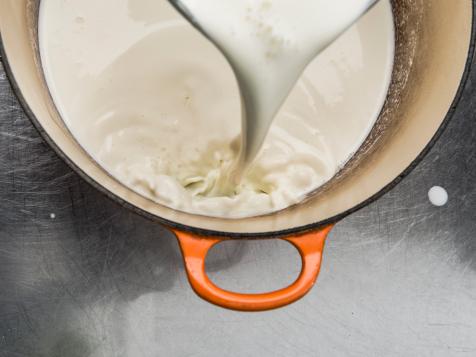What Does Scalding Milk Do? Exploring the Purpose and Benefits
Scalding milk is a technique commonly used in cooking and baking, but what exactly does it do? Let's delve into the purpose and benefits of scalding milk to understand its role in culinary endeavors:
1. Pasteurization and Sterilization:
- Scalding milk involves heating it to just below the boiling point, around 180°F (82°C), and then quickly cooling it down. This process helps to pasteurize the milk, killing any harmful bacteria present, and sterilize it for use in recipes.
2. Protein Denaturation:
- Heating milk to scalding temperature causes the proteins in the milk, particularly whey and casein, to denature. This alters their structure and helps to stabilize the milk, preventing curdling when it's incorporated into other ingredients or exposed to heat during cooking.
what does scalding milk do
3. Enzyme Inactivation:
- Scalding milk also helps to inactivate certain enzymes present in raw milk that can affect the texture and flavor of dishes. By heating the milk, these enzymes are deactivated, ensuring a smoother and more consistent result in recipes.
4. Flavor Enhancement:
- Scalding milk can enhance the flavor of certain dishes by concentrating the milk solids and caramelizing the natural sugars present in the milk. This can impart a richer, creamier taste to recipes such as custards, puddings, and sauces.
5. Improved Texture:
- In baking, scalding milk before adding it to dough or batter can improve the texture of the final product. The denatured proteins and concentrated milk solids help to create a softer, more tender crumb in baked goods like bread, cakes, and muffins.
6. Preventing Skin Formation:
- When milk is heated without stirring, a skin or film may form on the surface due to the denatured proteins and milk solids. Scalding milk allows you to control this process and prevent the formation of a skin by stirring continuously as it heats.
7. Activating Leavening Agents:
- In recipes that call for scalded milk, such as certain bread and cake recipes, the heat from scalding the milk can activate leavening agents like yeast or baking powder, helping the dough or batter to rise properly and achieve the desired texture.
what does scalding milk do
8. Enhancing Emulsification:
- Scalding milk can also improve emulsification in recipes where milk is combined with fats or oils, such as in sauces or custards. The denatured proteins and stabilized milk structure help to create a smoother, more cohesive mixture.
9. Creating Consistency in Recipes:
- Scalding milk ensures consistency in recipes by providing a standardized base ingredient that has been sterilized and prepared in a way that optimizes its flavor, texture, and performance in cooking and baking.
10. Time-Honored Tradition:
- While modern milk processing methods have made scalding milk less necessary for safety reasons, the technique remains a time-honored tradition in culinary practice, valued for its role in enhancing the quality and flavor of various dishes.
Conclusion: Scalding milk serves multiple purposes in cooking and baking, from pasteurization and protein denaturation to flavor enhancement and texture improvement. By understanding the benefits of scalding milk and incorporating this technique into your culinary repertoire, you can elevate the quality and taste of your favorite recipes and achieve consistently delicious results.

